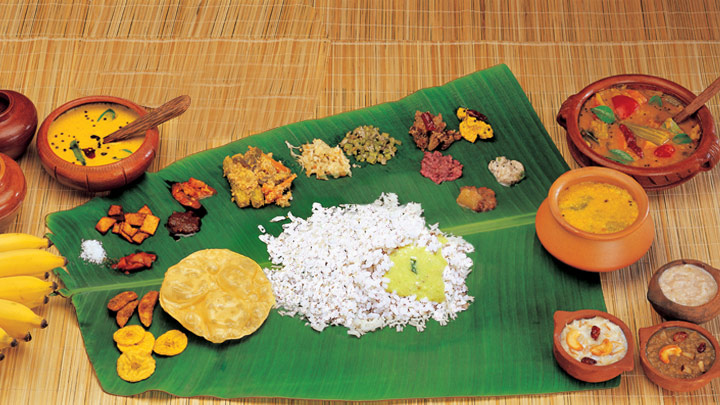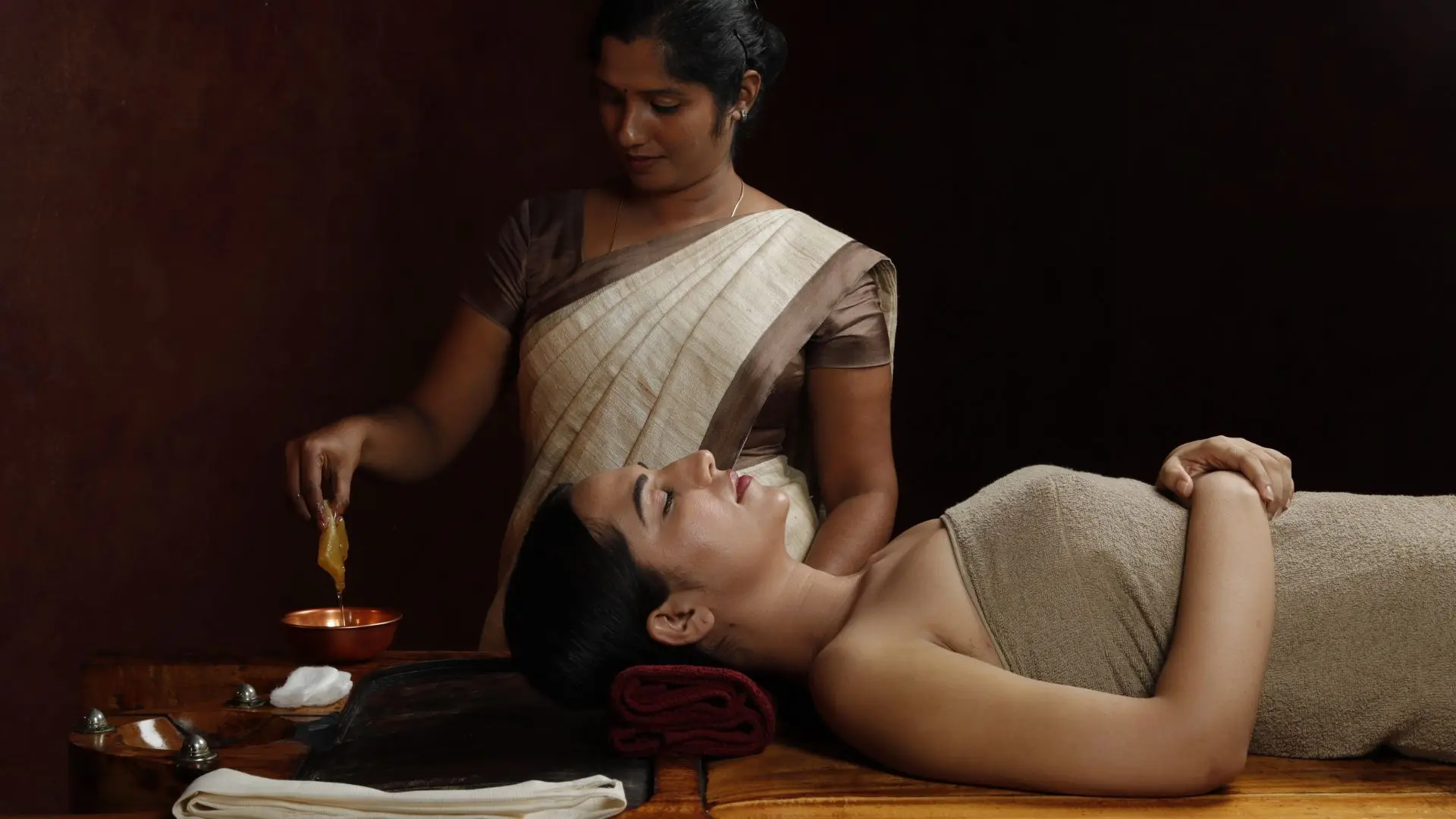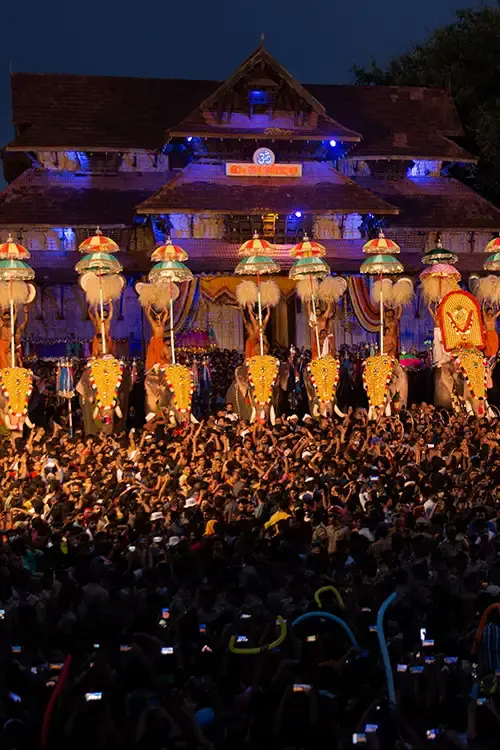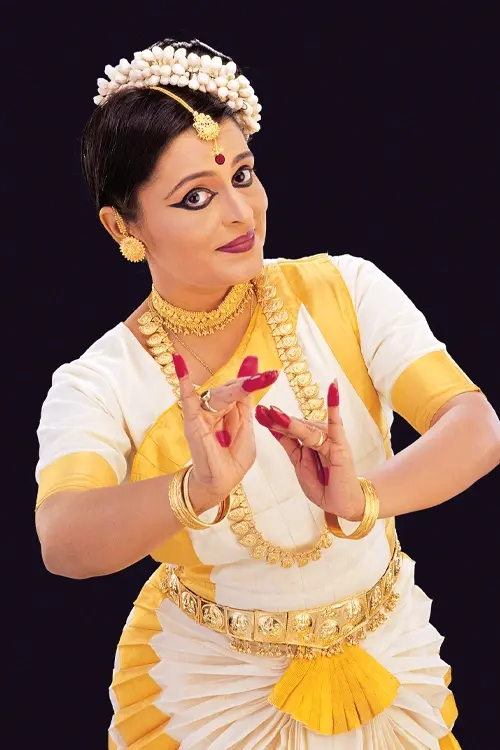Enchanting Kerala

Onasadhya - A Feast of Delicacies
Festivals are rarely complete sans the festive spread.
Food and celebrations have shared an inseparable bond since time immemorial. The scenario is no different during Onam, the most important and auspicious festival of Kerala. The Onasadhya, the grand traditional vegetarian lunch during Onam, is one of the main attractions of the festival.
The Sadya is the traditional vegetarian feast of Kerala. Usually served as lunch, it consists of par boiled pink rice, side dishes, savouries, pickles and desserts spread out on a plantain leaf. Tradition insists that the tapering end of the plantain leaf should point to the left of the seated guest. Rice is served on the lower half of the leaf. The Onasadhya refers to the Sadya served on the Thiruvonam day, the most auspicious of the four days during the festival.
In a Sadya rice is served only after all the side dishes and savouries have been served.
Avial, an unavoidable side-dish is a blend of vegetables, coconut paste and green chillies. It is seasoned with a spoonful of fresh coconut oil and some raw curry leaves stirred immediately after the dish is taken off the stove.
Some of the other important side-dishes include Thoran and Olan. Thoran can be minced string beans, cabbage, radish or grams, mixed with grated coconut and sautèed with a dash of red chillies and turmeric powder. Then, there is Olan, which is a bland dish of pumpkin and red grams cooked in thin gravy of coconut milk.
The savouries include Upperi, Pappadam, Puli Inji, Pachadi and Kichadi. Upperi is deep-fried banana chips. Pappadams are fried creamy, sun-dried wafer of black gram flour. The Puli Inji is a rich brown, hot and sweet chutney, while the Kichadi consists of sliced and sautèed cucumber or ladies finger in curd, seasoned with mustard, red chillies and curry leaves in coconut oil. Pickles are usually mango and lime.
Once the rice and side-dishes have been served, the serving of Parippu, a liquid curry made of small gram and ghee marks the beginning of the feast. The second course starts with Sambar, the famous south Indian vegetable stew in which any available combination of vegetables are boiled in a gravy of crushed lentils, onions, chillies, coriander, turmeric and with a pinch of asafoetida.
Desserts are served mid-way through the meal. The Payasam is a thick fluid dish of sweet brown molasses, coconut milk and spices, garnished with cashew nuts and raisins. There could be successive servings of Payasams such as the Paalada Pradhaman and Parippu Pradhaman.
Pazham, a ripe golden yellow plantain, is usually taken along with the Payasams. After the Payasams, rice is served once more with the Pulisseri, which is seasoned buttermilk with turmeric powder and green chillies. This is followed by spicy Rasam, which is a mixture of chilli and peppercorn powders, boiled in diluted tamarind juice. The feast ends with plain sour buttermilk that comes with chopped green chillies and ginger and salt to taste.
Onasadhya is more than just a feast. The whole feast has been designed in a scientific way by the ancestors. It is a complete, balanced and nutritious meal and also ensures proper digestion and optimum absorption of nutrients by the body.
This Onam, come relish a feast of delicacies in God’s Own Country.






